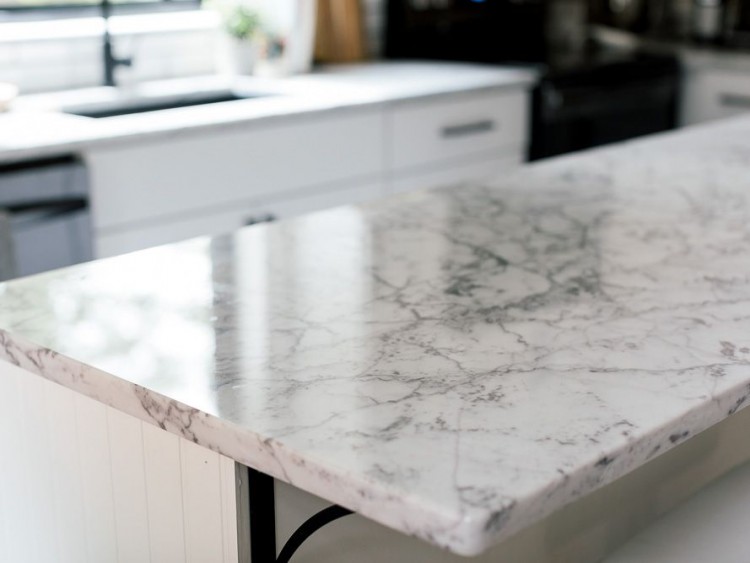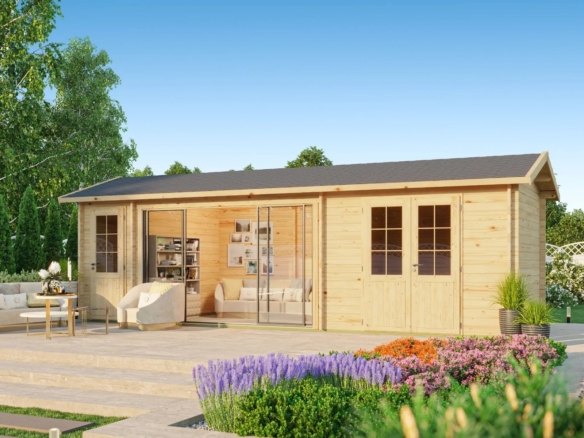If you’re thinking about remodeling your kitchen, you’re probably trying to decide what material to use for your countertops. There are so many options to choose from — marble, granite, quartz. But one material that perhaps you haven’t considered is laminate. Years ago, it was the go-to choice for kitchen counters. The natural stone options we commonly see today, while popular, haven’t entirely replaced them. Many homeowners still use laminate in their homes.
When you’re shopping for a countertop for your kitchen, laminate can be an appealing option. It can look like just about anything at a price that can’t be beaten. Laminate is great for the budget-conscious, but it also has several disadvantages that make it a poor kitchen counter choice. More importantly, those other options don’t have the same limitations, and disadvantages meaning the laminate could cost you more trouble and money in the long run.
Here are four things you should know about before choosing to install laminate countertops in your kitchen.
Limited Durability
Compared to granite or quartz, laminate is simply nowhere near as durable as its competitors. The max life for a laminate countertop is estimated to be about 10-12 years, and that is only when it is exceptionally well cared for. That hardly seems like any time at all when you consider that granite can last more than 100 years and quartz can last forever.
So why doesn’t it last that long?
Compared to the natural stone alternatives, laminate is essentially a compressed particle board. Most of the time, it’s pretty high quality (for particleboard), but it still starts as paper. This compressed particleboard has layers of plastic (or resins) added in between the sheets of paper material. Eventually, it hardens into a single, semi-rigid sheet of plastic material. Then the whole thing is coated with a thick sealant.
When new, the seal around the laminate board works exceptionally well and typically looks great! As time passes, however, that seal can wear away. This is especially likely to happen if the surface gets cut or otherwise punctured. Obviously, in a kitchen, avoiding this type of damage is not always possible. Even if you are as careful as possible, the surface will likely be damaged sooner or later.
Furthermore, since much of the material is plastic, the counter is not very heat resistant. It can burn quickly, and not much heat is needed to melt away the top layer. This means that kitchen fires might be more likely to occur, and they could be harder to put out. It also means that if you accidentally put a hot pot directly on the counter, the surface is probably going to be ruined very quickly.
Once the sealant on the surface gets punctured or otherwise damaged, there is no way to repair it. It can not be resealed. Over time this damage will mean that material inside the countertop can start to break down, and the entire countertop will eventually need to be replaced.
High Maintenance
Laminate requires a lot of maintenance to keep it in good shape. You have to constantly protect the outer layer of sealant, particularly if you want to keep it looking great or lasting a long time. Even minor damage can cause it to start breaking down. You may be limited in the cleaning products you can use, as harsh chemicals can also affect that seal. Plus, everyday kitchen tasks like cooking and preparing food can easily damage the countertop’s surface even if you are extremely careful. While there is no maintenance-free countertop option, granite and quartz are much more functional in the kitchen.
Limited Design Options
Laminate can’t be used to make the newest kinds of designs that you see in modern kitchens, such as those waterfall countertops. If you don’t know about this more recent trend, you can see more about it here. Waterfall counters countertops aren’t just another new trend. They extend the countertop’s surface material over the side and nearly to the floor, which does a great job protecting the base cabinets in high traffic. This extra protection can keep your base cabinets look great for a much more extended period of time.
Of course, laminate can be made in basically every color. It can also even be made to mimic the look of natural stone. But no matter what it looks like, the countertop will still be solid pieces of semi-rigid plastic that can really only be used on top of the base cabinets. The more modern kitchen designs that you think of in that “dream” kitchen simply can not be done with laminate.
Could Decrease Your Home’s Value
Laminate in the kitchen can easily have an adverse effect on the value of your home. The materials used in your kitchen and every room are considered when your home is appraised.
Even if laminate counters don’t impact your appraisal, the material can have an adverse effect on how much you can sell your house for once you are ready to put it on the market. Potential buyers aren’t just comparing upgrades from house to house. In today’s markets, natural stone in the kitchen is almost a basic expectation.
Your laminate counters, no matter how well you’ve cared for them, will stand out to the buyer as something that needs to be fixed. Most buyers are looking for that move-in-ready appearance, so laminate means you run the risk of losing your potential buyer to the nearly identical house down the road that has granite in the kitchen.
Remodeling any area of your home typically means a careful balancing act between the finished look you want to have and the budget you have for the project. Having to consider both of these things means that you have to be careful when choosing all of your materials. Laminate counters can be an excellent way to stay within your budget. However, before you choose laminate for your counters, you must be sure you have weighed the advantages and all of the disadvantages that material has to offer. You don’t want to save money now and then have it cost you more later.




